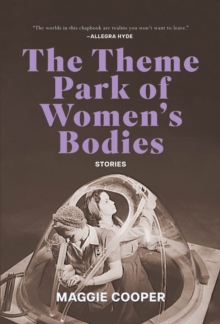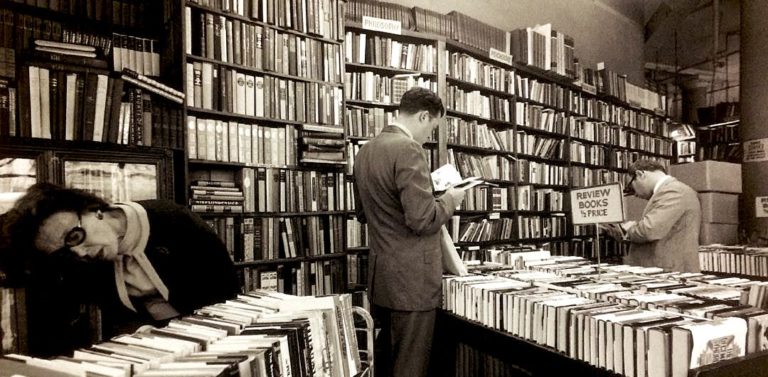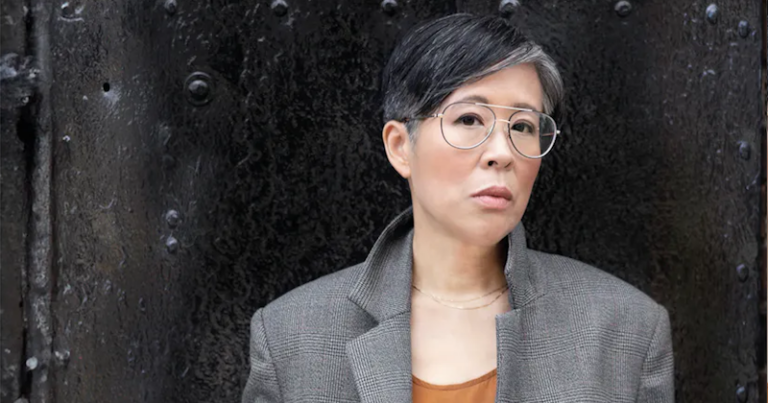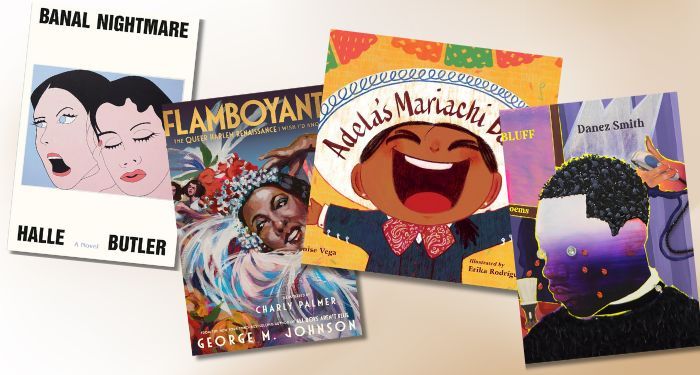It’s one thing for a book to pass the Bechdel Test or give readers a glimpse inside Virginia Woolf’s room of one’s own—it’s another for a book to let that room extend from cover to cover. After spending far too many of my school years reading books about cis boys and men, as an adult, I’ve gravitated toward books about the rest of us, and I’m particularly fascinated with stories that focus spaces where women are not only present, but centered.
My chapbook of flash fiction, The Theme Park of Women’s Bodies, is organized around spaces created by, for, or around women. Some—like the ship run by badass lady pirates in a story called “Our Lady of the High Seas”—are spaces of empowerment and mutuality, while others—like the sanatorium in “The Cure”—are sites of oppression and control. Many fall somewhere in the middle and explore the ways that gender and the body can both foster solidarity and beget violence, exclusion, and exploitation.
As it turns out, even the absence of men on the page cannot neutralize the impact of the patriarchy, a reality that the following writers grapple with as they consider woodsy islands, old mansions, college campuses, and locker rooms populated by women and nonbinary people. Still, each of these authors carves out space for the pleasures, rewards, and even the radical possibilities of creating space for marginalized genders—on the page and in the world beyond our bookshelves.
The Women Could Fly by Megan Giddings
In The Women Could Fly, a Bureau of Witchcraft mandates women marry by age 30 to ensure their magic will be controlled. The only alternative for protagonist Jo: a mysterious island that appears in the middle of Lake Superior once every seven years—a witchy Brigadoon where she has reason to believe she’ll find the mother who disappeared when Jo was a teenager. Come for the timely speculative premise, stay for the precisely observed and grounded description—Giddings is equally great on the indignities (and occasional pleasures!) of dating as a Black woman in the Midwest and the thrill of magical flight over a wooded island.
Yours for the Taking by Gabrielle Korn
As climate change renders earth increasingly uninhabitable, a lucky subset of the population retreats to the Inside: an elaborately built shelter designed by Jacqueline Millender, a toxic cis white ladyboss whose version of utopia many millennial readers will recognize as sinister send-up of the Wing, complete with mauve uniforms and a signature scent that just-so-happens to double as a sedative. Jacqueline’s thesis is that men are responsible for the ecological destruction of the world, and so, she’ll rebuild civilization from a generation of women only. This plan is exactly as foolproof as it sounds, and the fallout is both emotionally and literally disastrous. Told through the perspectives of Jacqueline and a diverse cast of women both Inside and out, Yours for the Taking is a queer dystopian novel about a certain brand of feminism and its shortcomings—a sequel, The Shutouts, is forthcoming later this year.
Killingly by Katharine Beutner
The action of Killingly revolves around the disappearance of Betha Mellish, a student at Mount Holyoke College, a place devoted to the education of women in a time when that was in itself a somewhat radical notion. There are plenty of men in this book, from Bertha’s family’s doctor to the detective hired to find her. However, the essential mystery of the novel is inextricably linked with the secret world Bertha and her fellow young women made for themselves—and Bertha’s desire to live a life outside the strictures of what was permitted of a woman in 1897. Juicy and suspenseful, literary and atmospheric, Killingly is a queer crime novel with Sarah Waters vibes.
The Farm by Joanne Ramos
Not unlike Jessamine Chan’s The School for Good Mothers, Joanne Ramos’s The Farm uses an institutional setting to dig into the complications and injustices of modern motherhood. The novel is centered on a commercial surrogacy outfit called Golden Acres, where women are paid big bucks to gestate under intense surveillance; the main character, Jane, is an immigrant from the Philippines who hopes carrying the child of a super wealthy client will be her ticket to financial security. The novel toes the line of realism and dystopia, offering a character-driven critique of the all-too-recognizable ways the economy of motherhood rests on the exploitation of low-income and BIPOC women.
The Garden by Clare Beams
Clare Beams’ haunting second novel takes place in 1948 at a grand old house in the Berkshires, where main character Irene, alongside several dozen other women, receives an experimental treatment for repeated miscarriages in the hope of finally carrying a baby to term. Yet as much as Irene wants a child, she’s also not a rule follower, sneaking away to discover a walled garden that appears to have uncanny powers. Inspired by the real history of mid-century fertility treatments and their chilling side effects, Beams weaves a gorgeously written account of what she’s called “pregnancy as a haunted house” and the troubled relationship of women’s reproduction and the medical establishment.
The Keeper: Soccer, Me, and the Law That Changed Women’s Lives by Kelcey Ervick
Kelcey Ervick’s graphic memoir tells the story of Title IX and its impact on women’s sports alongside her own experience as a goalkeeper through childhood and into college. This is Ervick’s first foray into book-length graphic narrative, after a decade of publishing fiction and prose nonfiction, and The Keeper showcases both her breathtaking artwork and literary sensibility. Ervick reminds readers that Nabokov, too, was a goal keeper, and like one of his butterflies making its way from bloom to bloom, The Keeper beautifully draws from sports, feminist history, and memoir.
A Place of Our Own: Six Spaces That Shaped Queer Women’s Culture by June Thomas
I have to admit my bias here—I’m Thomas’s literary agent, but I’d like to think that even if I weren’t, I’d be talking about her “charming, irreverent, tender…journey through lesbian history.” In six chapters, she digs into the largely untold stories of lesbian bars, feminist bookstores, sex-toy boutiques, softball diamonds, rural retreats, and vacation destinations—exploring the way these places were the settings where women fell in love, formed communities, and engaged in organizing and advocacy. Thomas is clear eyed about the way many of these spaces fell short, replicating the transphobic or racist biases of the women who built them; at the same time, she reveals the ways these places and the women in them laid the groundwork for queer life in 2024.
The post 7 Books About Places for Women appeared first on Electric Literature.













 Bengali (Bangladesh) ·
Bengali (Bangladesh) ·  English (United States) ·
English (United States) ·